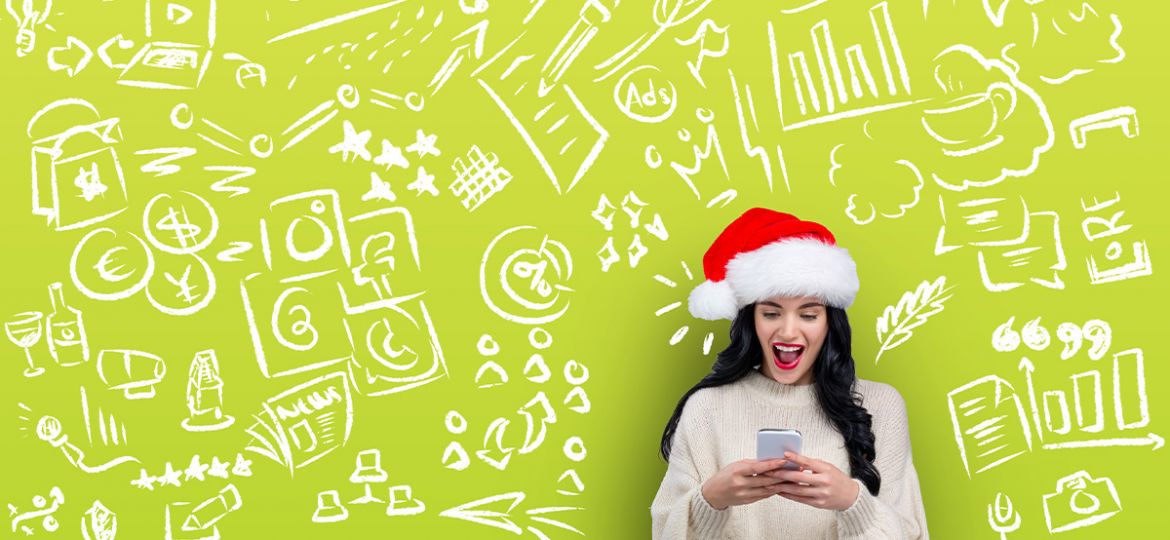
Meta Ads, Miracle Results
Targeting Holiday Gifting Intenders Without Wasting Budget
If your holiday Meta ads feel like lighting money on fire in a festive candle, that’s not because social is dead. It’s because your targeting and flighting were built for wishful thinking, not gifting intent. The fix isn’t magic. It’s method. You can absolutely turn Meta into a gift-selling machine between Thanksgiving and New Year—if you understand what actually drives intent and how to spend wisely when every other brand on earth is screaming for attention.
What follows is a ruthless, winery-specific playbook for the six-week window between Thanksgiving and New Year that prioritizes intent, protects margin, and leans on real benchmarks instead of folklore.
First, reality: volume is there, but it clusters
Holiday ecommerce keeps breaking records, with online spend hitting roughly $241.4B from Nov 1 to Dec 31 and mobile responsible for the majority of transactions. (Adobe Newsroom) Translation: your customers are buying on their phones while pretending to watch Hallmark movies. Cyber Week was massive, and Christmas Day was peak-mobile. Plan for that.
Meta pricing pressure in Q4 has stabilized compared to the ugly swings of prior years. CPMs were roughly flat to up low-single digits year over year in Q4 2024, with pricing pressure strongest in December. (MediaBeast) Plan for a bump as shipping cutoffs approach.
Benchmarks are not commandments, but they’re useful guardrails. Recent aggregator data places median Meta CTR around the high-1% range, with food and drink conversion rates among the better performers (roughly low-to-mid 2% reported in some datasets). (AI CMO) Treat these as directional, not destiny. Your creative, offer, and audience quality will move the needle more than “industry average.”
The targeting stack that doesn’t waste budget
1. Your Audience Isn’t “Everyone”
Meta’s algorithm can predict a lot of things—but it can’t read your winery’s wishful thinking. “People who like wine” is not a target audience; it’s a population segment roughly the size of Europe.
Start small and sharp:
- 7–14 Day Website Visitors: People who actually looked at your gift sets or sparkling wine pages.
- Cart and Checkout Abandoners: Those are sales that slipped through your fingers; go get them back.
- Past Buyers Who Sent Gifts or Shipped to Multiple Addresses: They already self-identified as your December heroes.
These are high-intent audiences. Then, clone them—literally. Use Meta’s Lookalike Audiences to find similar users. A 1–2% lookalike of gift purchasers tends to deliver the best results before the algorithm gets lazy with scale.
Holiday campaigns are about efficiency, not reach. You’re buying precision, not fame.
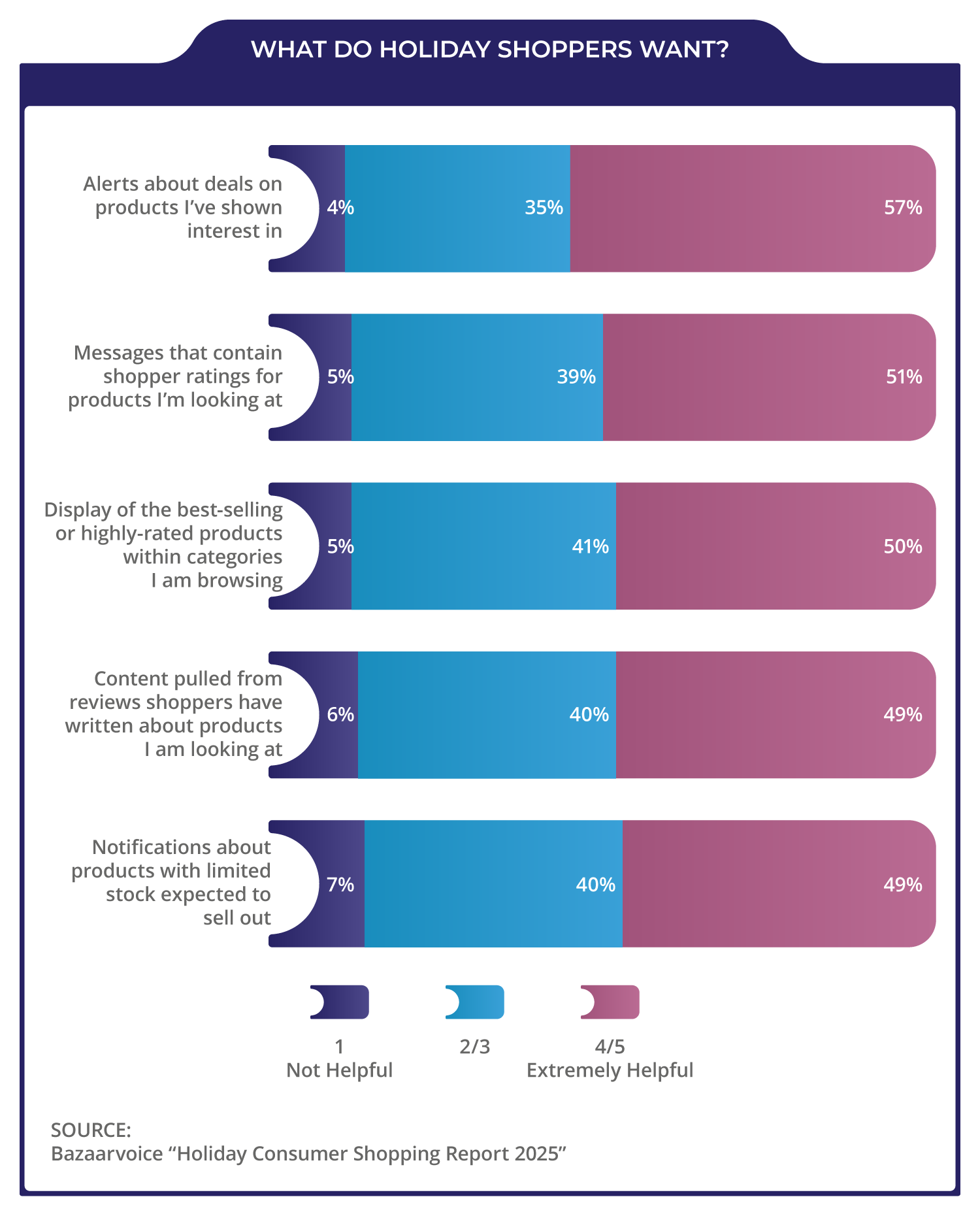
2. Retarget Like You Mean It
This is where the real ROI hides. During the holidays, buyers don’t act linear—they browse, compare, forget, and then panic-buy after seeing a reminder at 11:37 p.m.
Set retargeting windows that match that behavior:
- 1-Day: Cart abandoners get an immediate “Still need that gift?” message.
- 7-Day: Broader site visitors see urgency copy—“Ships by Dec 18!” or “Limited sets left.”
- 14-Day: Warm audiences get reintroduced to bundles, shipping perks, or local pickup options.
Meta reports that retargeting campaigns regularly outperform cold traffic by 2–3x in return on ad spend. The catch? They only work when your creative reminds people why they almost purchased. If your ad feels like déjà vu, it’s wasted spend.
3. Advantage+ Shopping, with adult supervision
Advantage+ is Meta’s polite way of saying, “Let us drive, you just pay for the gas.”
It’s Meta’s automated ad system—specifically Advantage+ Shopping Campaigns (ASC) for ecommerce—that uses machine learning to handle what used to require human finesse: audience targeting, placement, and creative testing. You load in your catalog, set your budget and objectives, and Meta’s algorithm dynamically decides who sees what, where, and when.
Advantage+ Shopping (A+) can simplify the mess in Q4 if you give it a sane product set and let it learn for at least 7 days. Use it to blend prospecting and remarketing, but guard your merch with exclusions:
- Exclude extreme low-margin SKUs.
- Pin holiday bundles, sparkling, and “giftable red” sets as your featured catalog items.
- Watch audience overlap with your manual retargeting; if A+ steals too much last-click credit from your surgical retargeting, cap or separate it.
Meta’s own case studies show cost-per-purchase improvements during holiday promos using A+ Shopping. Anecdotal, yes, but consistent with the platform’s AI favoring dynamic creatives and broader signals in peak season.
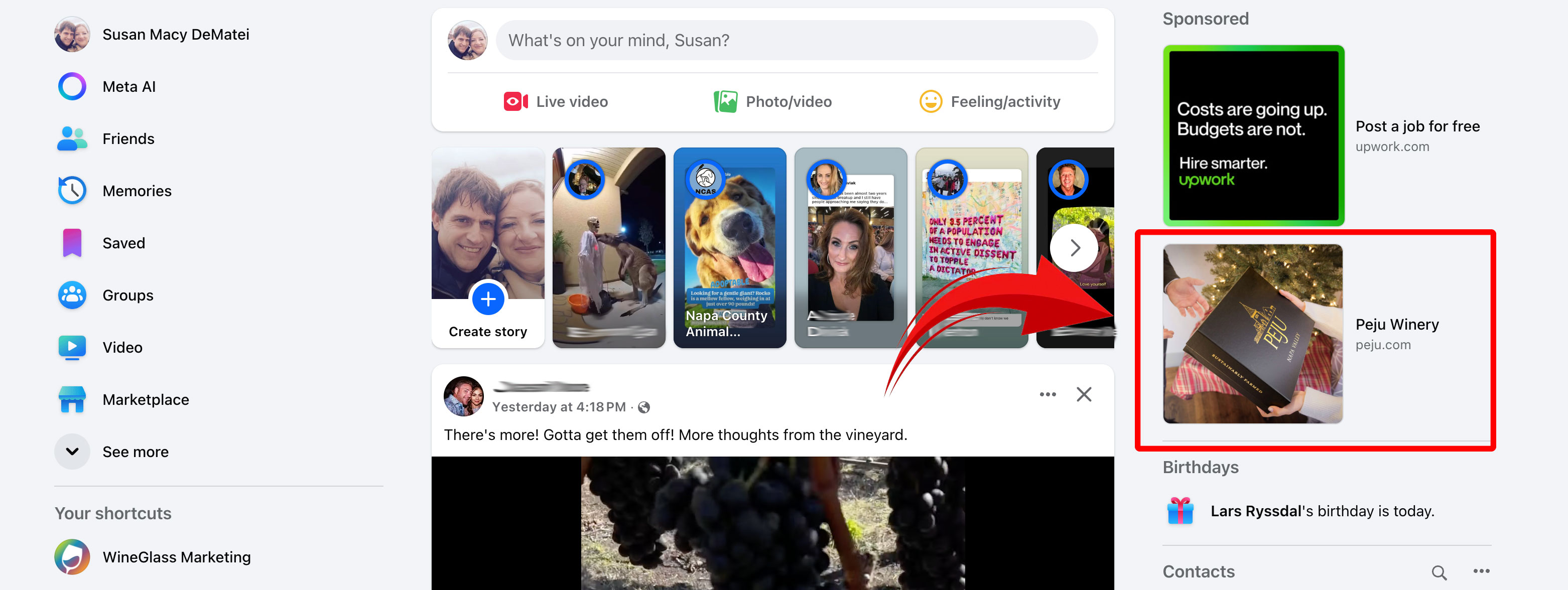
4. Creative that signals “gift” in one second
People scroll fast. You have a second to say, “this is a gift, and it will arrive on time.”
- Visuals: boxes, ribbons, card enclosures, multi-bottle sets, a “ship by Dec X” badge.
- Copy: “Arrives by Dec 20 in most states,” “Send to their door,” “Gift wrap available.”
- Formats: Reels/Stories for thumb-stopping motion; image carousels for bundles and price tiers; catalog ads for breadth.
Meta ads that signal “gifting” in the first frame see click-through rates nearly double the generic lifestyle versions (WordStream, 2024). Because no one wants to decode your brand aesthetic while panic-shopping on a phone.
5. Offers that lift AOV without wrecking margin
Everyone loves a good deal—until it eats your profit and trains your audience to wait for the next one. The trick is value stacking instead of discount stacking.
Try these:
- Free shipping thresholds: “Orders over $150 ship free.”
- Gift wrap add-ons: A small cost for big perceived value.
- Tiered perks: “Spend $200, get a magnum upgrade.”
Your average order value (AOV) will rise, and you’ll preserve your brand’s dignity. Remember: you’re not Amazon. You’re selling emotion—wine that feels thoughtful, not discounted.
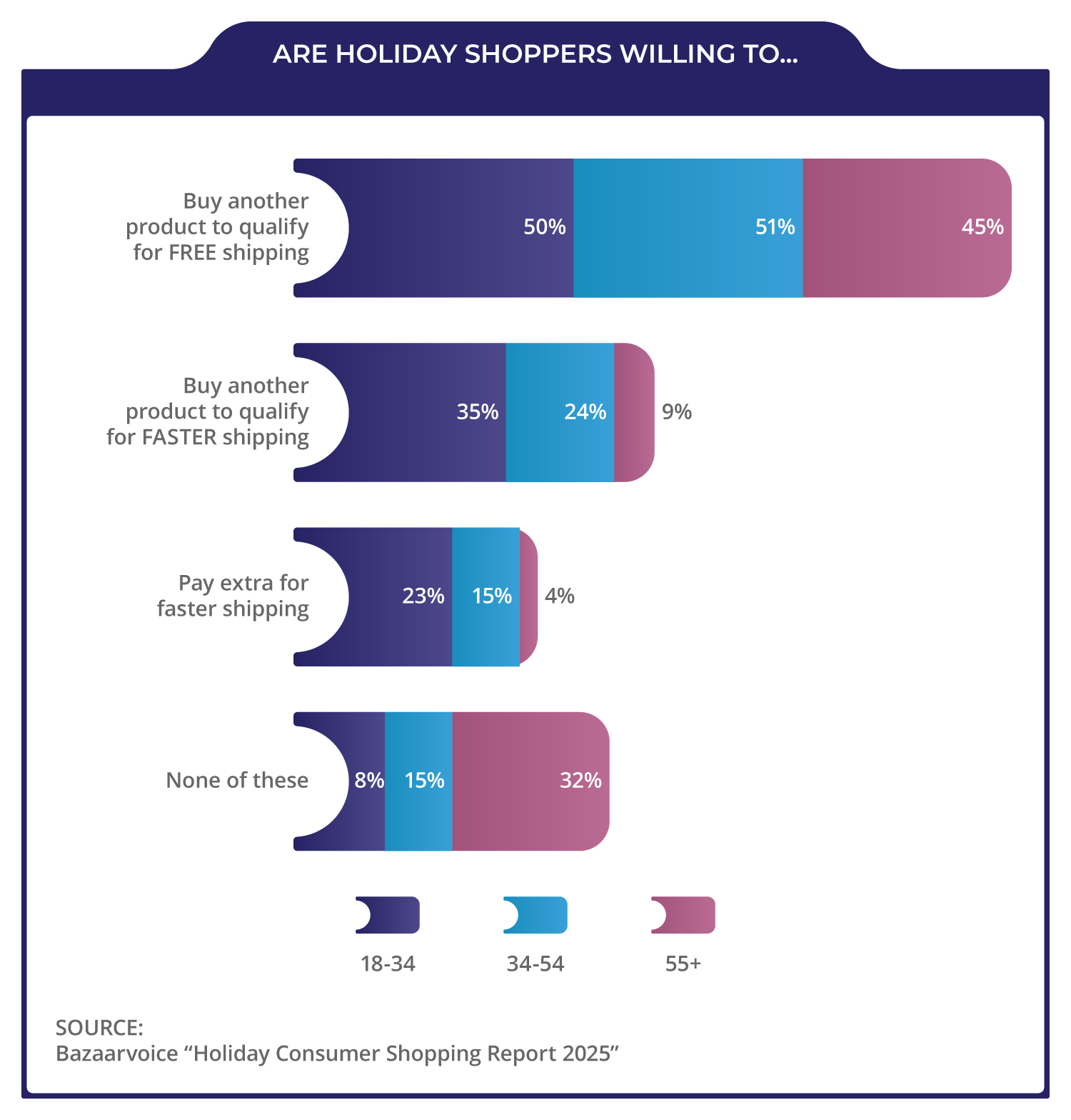
6. Follow the Holiday Rhythm
If you treat December like one long ad push, you’ll burn through budget faster than a candle at a tasting room party. Consumer intent spikes and drops in waves.
- Wave 1 – Thanksgiving to Cyber Monday:
The awareness phase. Hit gift sets, sparkling bundles, and early-bird perks. CPMs are high, but shoppers are primed. - Wave 2 – December 5–15:
The conversion zone. Push shipping cutoffs, urgency, and limited editions. Focus 60% of your budget here; Meta ad costs are high, but intent is peaking. - Wave 3 – December 16–24:
Gift card and local pickup season. Retarget like mad. CPMs rise but ROAS holds because urgency is through the roof. - Wave 4 – December 26–New Year’s:
Don’t go dark. “Treat yourself” campaigns and New Year’s sparkling ads turn recipients into new customers.
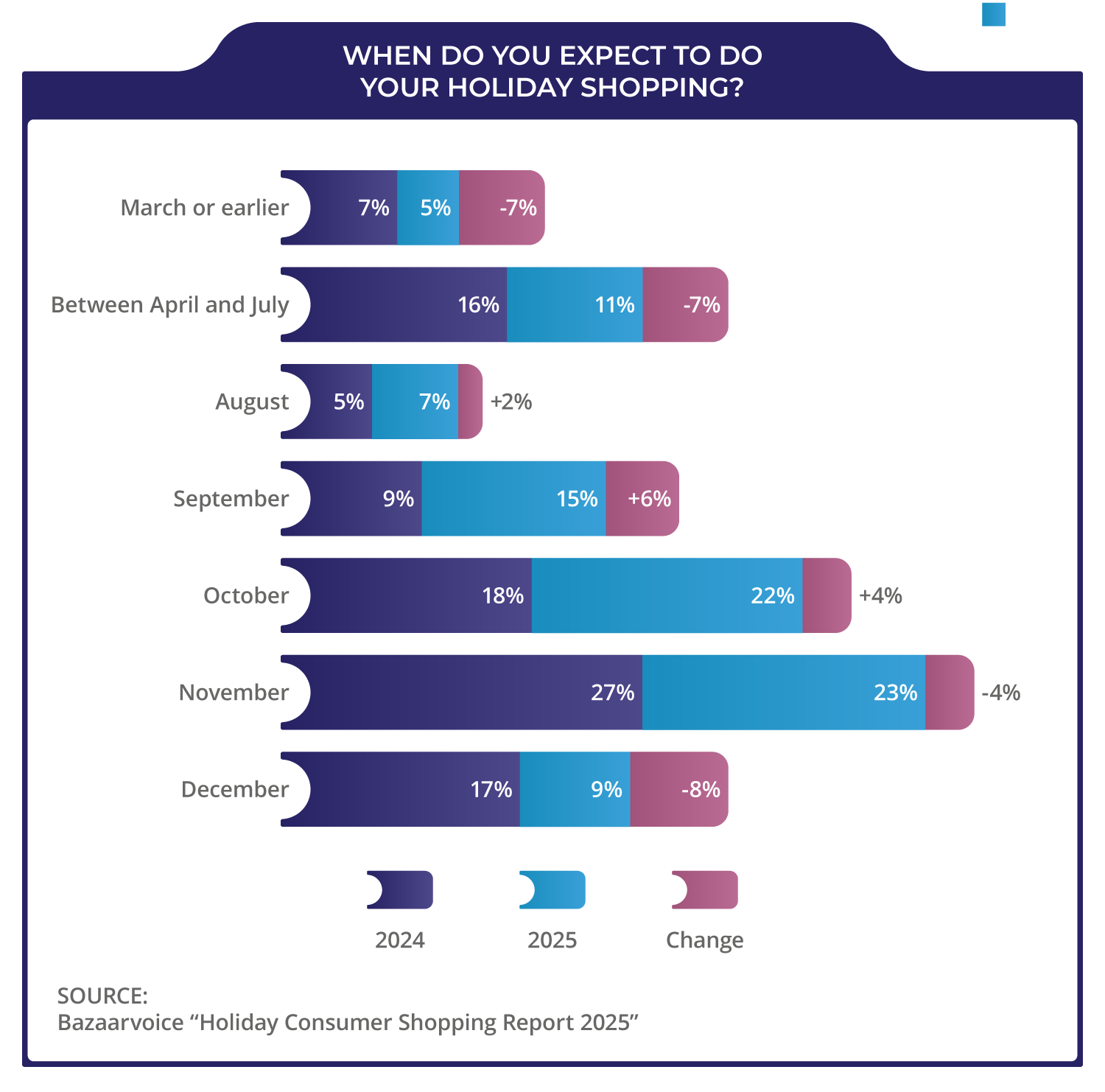
7. Budgets, guardrails, and when to step off the gas
- Budget elasticity: plan +30% surge funds for 72 hours around Cyber Monday and for the 4 days before your last ship cutoff. If ROAS holds and inventory is healthy, deploy. If it doesn’t appear to be working, pivot to gift cards/pickup.
- Frequency sanity: in small geographic market or with remarketing, cap ad frequency to avoid burning your list. If frequency > 5 and CTR < 0.8% on a retargeting set, rotate creative or shrink the window. Benchmarks vary, but sub-1% CTR on warm audiences usually signals fatigue.
- Attribution hygiene: tag everything with UTMs by offer and audience. Don’t celebrate Meta-reported ROAS if Google Analytics and Commerce7 tell a different story. The point is cash, not dashboards.
8. Track Like a Cynic, Adjust Like a Scientist
If you’re still measuring “success” by likes or comments, it’s time to graduate. The benchmarks are straightforward:
- CTR: Aim for 1–2%. Under 1% means your creative is boring.
- Conversion rate: 2–3% is solid for food and beverage.
- ROAS: $3–$4 for every dollar spent is realistic; anything above that deserves champagne.
Tag everything. UTM every link. And decide what your single source of truth is when you receive different results from Google, Meta and your eCommerce. When the data looks weird, take the time to investigate.
9. Your Best Customers Aren’t Done Buying
Wine club members are your easiest upsell. Yet most wineries ignore them in December, assuming their holiday shopping is done. Big mistake.
Create member-only bundles, early access, or packaging perks that make them feel special. If your club list isn’t buying gifts from you, they’re buying from someone else.
Some ideas:
- Club-adjacent gifting: Upload a list of members who historically buy gifts or ship to multiple addresses. Show them exclusive giftable sets with member-only packaging upgrades.
- Sparkling as the spear: Use sparkling to acquire, then retarget into still bundles. It’s the category shoppers already associate with gatherings and New Year’s.
- Recipient retargeting: Drop a card in every shipped gift with a QR to a “Thanks for the gift” landing page + welcome offer. Build a recipient custom audience to retarget during Dec 26–Jan 15.
- Content that earns the click: Short videos of unboxing, bottle close-ups with gifting context, and “ships by Friday” overlays. No vineyards at sunset. It’s December. Show the gift.
10. Keep the Conversation Going After Christmas
The party doesn’t stop at shipping cutoffs. The people who received your wine as gifts are now your next audience. Include a QR code or card that says, “Loved your gift? Here’s where to get more.”
Run a light retargeting ad in early January—call it the “New Year, New Favorite Winery” campaign.
The Smart Winery Holiday Playbook (In Case You Skimmed Everything Above)
- Build lookalike audiences now.
- Remarketing is always your best ROAS
- Use the tools provided – try Advantage+
- Include creative that’s unmistakably giftable.
- Offer value, not desperation discounts.
- Time your budget around intent waves.
- Plan your spend around key buying times.
- Measure what matters, not what flatters.
- Don’t forget your loyal list.
- Don’t vanish after December 25
Holiday Meta ads aren’t about luck. They’re about timing, targeting, and empathy for the frazzled human holding a credit card at 11 p.m.
If you treat your campaigns like a strategy instead of a sprint, you’ll stop hoping for miracles—and start creating them.


